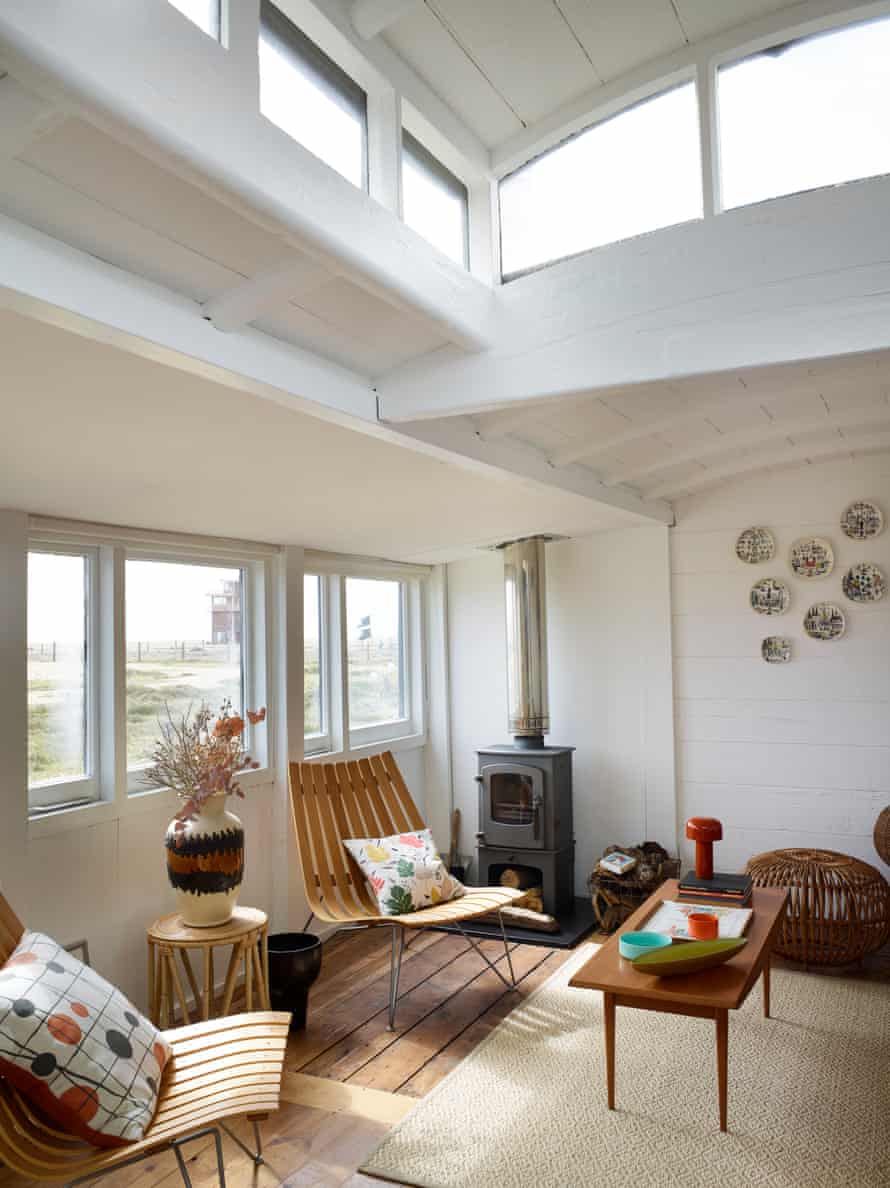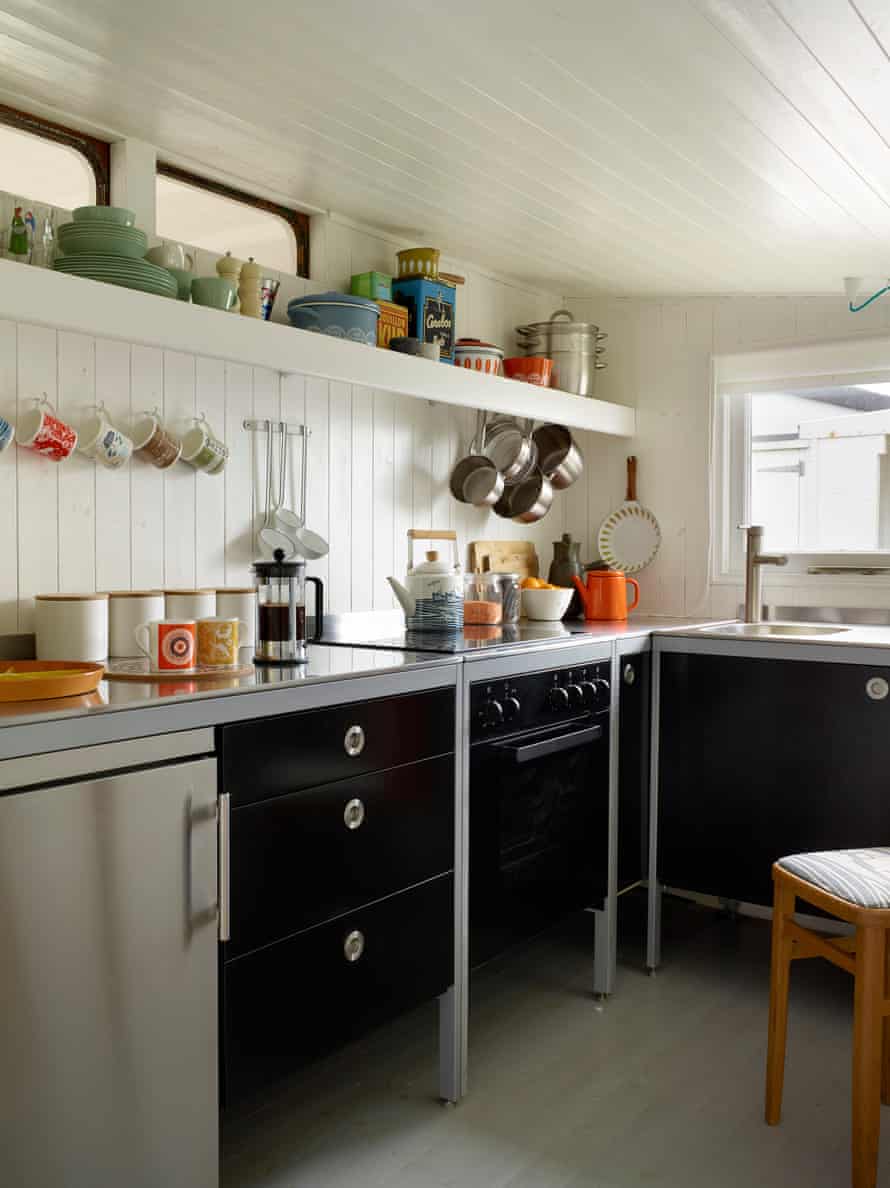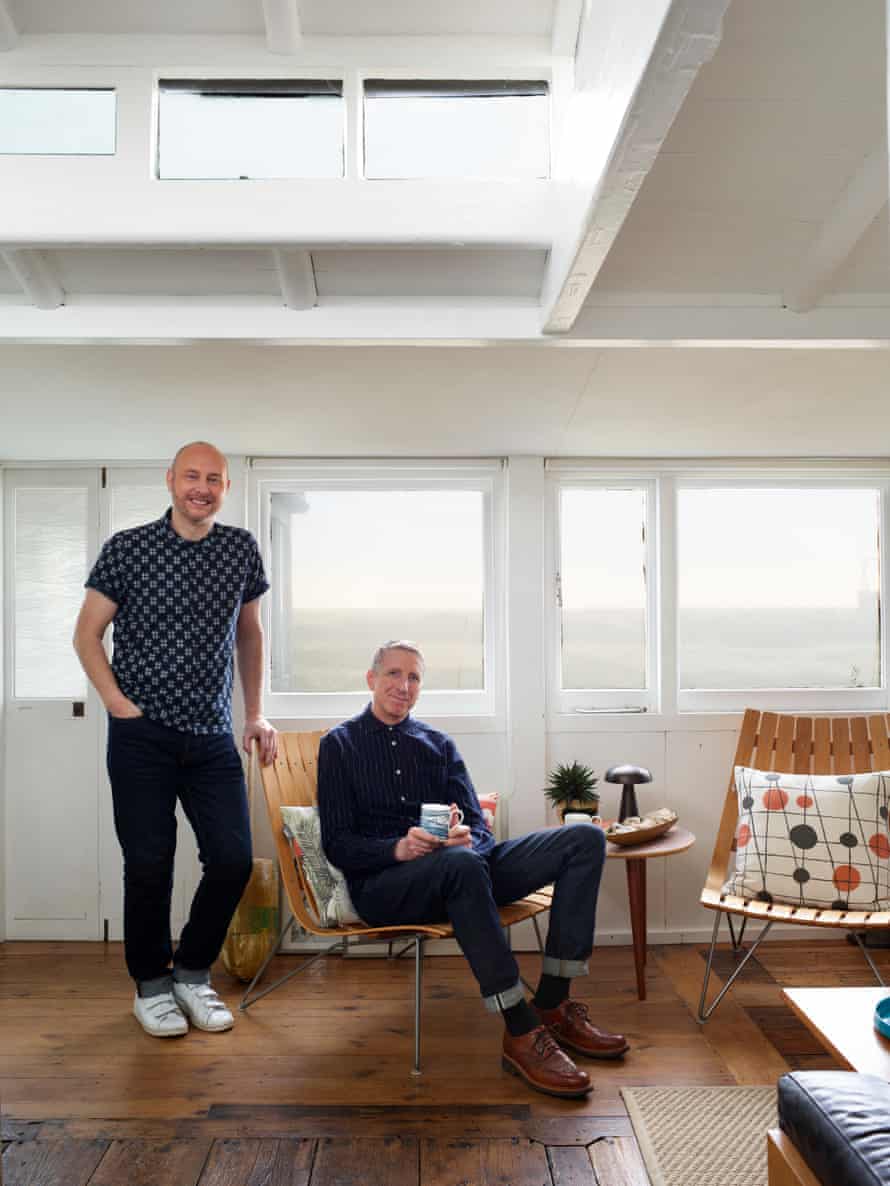
Designers Keith Stephenson and Mark Hampshire have a longstanding love of the English coast. It has always been an important point of inspiration for the wallpaper and textile patterns within their collections for Mini Moderns, which the partners founded 16 years ago. Their enduring relationship with the shoreline was revitalised when Stephenson and Hampshire eventually decided to buy and update a railway carriage cabin, perched on the shingle peninsula of Dungeness.
“I used to work as an art director in fashion and we would do shoots down here on the beach during the 90s,” says Stephenson. “That was my first introduction to Dungeness. After Mark and I met we used to come down from London quite regularly on a Sunday just to see the sea and kick off the working week. It was just a way of getting away from everything – and it still is.”
Stephenson and Hampshire started collaborating with the artist Rob Ryan on a wallpaper collection 10 years ago, and he would sometimes lend the couple a flat in Rye that he was renting at the time. On one of these Kent coastal visits, they suddenly ended up buying a house.
“We had exhausted all the secondhand shops in Rye, so we started looking in the estate agents’ windows,” says Stephenson. “We ended up on a little trip to Dungeness doing more than just staring at the sea. We looked at the cabin on the Sunday, and by Monday we had put in an offer.. Houses on Dungeness don’t come up for sale very often and this one had not been on the market for very long.”

The cabin itself dates back to the 1920s when South Eastern Railway which once owned the Dungeness Estate, offered its staff the chance to buy redundant railway carriages, which were taken off the nearby sidings and pushed on to the shingle using telegraph poles as rollers.
These fresh lines of carriage cabins helped transform the hamlet, adding a cluster of simple homes and holiday escapes to the existing vernacular of timber-framed houses owned and built by the established fishing families, who were among the first to settle on the Ness. Updated by inventive owners over the years, the carriage cabins helped to turn Dungeness into a unique micro-resort.

“It’s quite a distinct line of carriages, but where ours is a little different is that while all our neighbours have passenger carriages, this is a guard’s van,” says Hampshire. “It has a lantern roof, so the guard could look up and down the line. There is only one other house on Dungeness with a lantern roof like this and the strange thing about Dungeness is that it attracts this weird confluence of nautical enthusiasts and railway enthusiasts, so we have found people standing outside who have been able to name the kind of carriage it is and the model type.”
Crucially for the interiors, the lantern skylight draws natural light into the main living spaces, making them bright and welcoming. The cabin had previously been rented out and used as a fish smokery, with the smoked fish sold from the front. The place was certainly in need of some love and attention, but the structure itself proved to be sound. Stephenson and Hampshire updated the electrics and services, installing both central heating and a log-burning stove.
The walls of the main living spaces are painted a beach house white, while the original wooden floors have been restored. There’s a mix of midcentury furniture and contemporary pieces, along with Mini Moderns designs. The front hall is decorated with the green and white version of Stephenson and Hampshire’s Dungeness wallpaper, which includes familiar motifs, such as the old lighthouse and the T-shaped navigation aid that looms over the shingle beach.

“We call our design ethos ‘pattern with a story’”, says Hampshire. “So everything we do is rooted in some kind of narrative about our lives. Dungeness felt like it was the next chapter that we had to use as the inspiration for a collection and so Dungeness is the hero print in our Hinterland range. We were very aware that Dungeness is a place that changes with the elements, so we wanted the wallpaper to represent a snapshot of what was here when we arrived.”
“We love the big skies and the amount of stars that you can see at night is breathtaking,” says Stephenson. “We love it in the summer, of course, but we particularly love the feeling of getting cosy here in the winter and putting the fire on. It’s amazing how dramatic the coast can be during those winter months.”
Dungeness: Coastal Architecture by Dominic Bradbury and Rachael Smith (Pavilion, £25) will be published on 5 May



